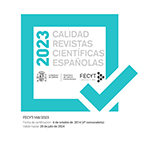Food studies and the integration of multiple methods
Resumen
The study of food and eating draws evidence from many different disciplines using many different methods. This paper argues that this should be viewed positively; the idea that there is one best method, or suite of methods, to which every social scientist should be committed is at odds with both processes of knowledge formation and the complexity of alimentary life. The argument pursued is that complex research questions necessitate multiple sources and methods, the greatest challenge being to fashion and to justify an integrated interpretation of different types of data. The paper examines these issues with reference to debates about the use of mixed methods, which have mostly focused on the reconciliation within a single study of quantitative and qualitative data. The exploration is illustrated by evidence from a study of the activity of eating out. It is suggested that the combination of evidence produced by different methods may be the key to generating explanations, and ultimately theories, which transcend disciplinary boundaries.
Descargas
Descarga artículo
Licencia
La revista Política y Sociedad, para fomentar el intercambio global del conocimiento, facilita el acceso sin restricciones a sus contenidos desde el momento de su publicación en la presente edición electrónica, y por eso es una revista de acceso abierto. Los originales publicados en esta revista son propiedad de la Universidad Complutense de Madrid y es obligatorio citar su procedencia en cualquier reproducción total o parcial. Todos los contenidos se distribuyen bajo una licencia de uso y distribución Creative Commons Reconocimiento 4.0 (CC BY 4.0). Esta circunstancia ha de hacerse constar expresamente de esta forma cuando sea necesario. Puede consultar la versión informativa y el texto legal de la licencia.











